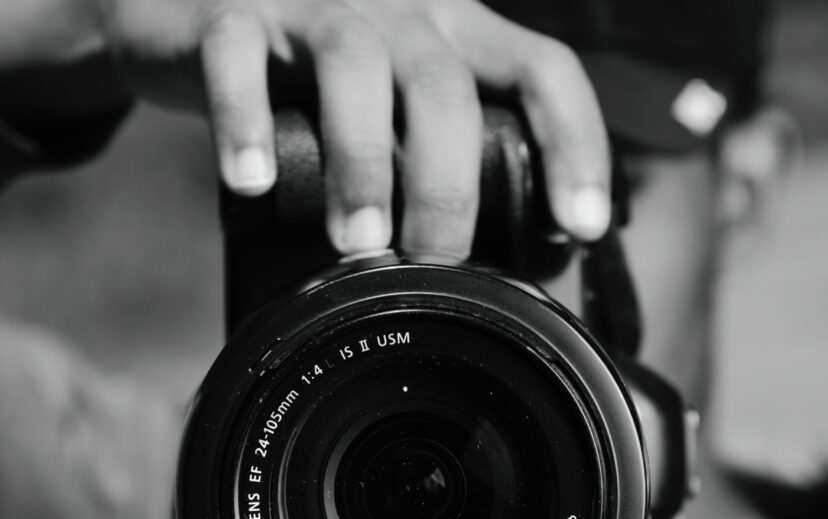On May 17, 2023, the Supreme Court issued its opinion in the Warhol Foundation for the Visual Arts, Inc. v. Goldsmith, a highly anticipated decision in a well-publicized case involving issues of fair use. In this post, I’ll briefly recap the background to this case and discuss why I believe that the high court made the right call in finding that the particular use by Andy Warhol of Lynn Goldsmith’s photograph of Prince did not constitute fair use.
FACTUAL BACKGROUND
Lynn Goldsmith is a photographer who is well known for her photos of famous musicians and other celebrities. Goldsmith had the opportunity to photograph Prince in 1981, early in the artist’s career. Following the 1984 release of Prince’s Purple Rain album, Vanity Fair planned to publish an article about Prince and his success. The magazine acquired a license from Goldsmith for a one-time use for one of her 1981 portraits. Vanity Fair then hired the iconic Andy Warhol to create artwork for the Prince article and the magazine gave Warhol Goldsmith’s photograph as source material from which Warhol created a colorful print. Vanity Fair credited Goldsmith as having provided source material for the published Prince article featuring Warhol’s work.
Fast forward to 2016 when Vanity Fair published a special edition following Prince’s death. For this issue, the magazine sought permission from the Warhol Foundation (as Andy passed in 1987, leaving his copyrights to the Foundation) to reuse the 1984 print. Vanity Fair learned that Warhol had made an additional 15 prints of Prince (the “Prince Series”) based upon the Goldsmith photo, in various colors and with differing expressions from the one the magazine used in 1984. Vanity Fair chose a different Warhol print, the orange one, from the series for the 2016 article. Unlike the 1984 article, Goldsmith was not credited in the 2016 Prince special edition. It was only because of the 2016 Vanity Fair issue that Goldsmith learned, much to her surprise, of the existence of the entire Prince Series. She thereafter registered her photo with the Copyright Office (which is a prerequisite to filing an infringement lawsuit) and reached out to the Warhol Foundation about the Vanity Fair special edition and the Prince Series.
THE PRIOR COURT PROCEEDINGS
The Warhol Foundation struck first, filing an action for a declaratory judgment that the Prince Series was not infringing upon Goldsmith’s copyright in her photograph. Goldsmith filed a counterclaim alleging infringement. In 2019, the District Court granted the Foundation’s summary judgment motion (and denied Goldsmith’s cross-motion), determining that the Prince Series was “transformative” of Goldsmith’s photograph because the prints of Prince conveyed a different meaning or message from Goldsmith’s portrait. The court stated that “the Prince series works can reasonably be perceived to have transformed Prince from a vulnerable, uncomfortable person to an iconic, larger-than-life figure.” Goldsmith appealed the ruling to the Second Circuit Court of Appeals.
The Second Circuit reversed the District Court’s decision, holding that the Prince Series was not a “transformative” fair use of the Goldsmith photo, but rather constituted an unauthorized and infringing “derivative work” of that picture. The appellate court emphasized that the Prince Series “retains the essential elements of Goldsmith’s photograph without significantly adding to or altering those elements,” and further noted that Goldsmith’s image “remains the recognizable foundation upon which the Prince Series is built.” The Second Circuit also criticized the trial court’s subjective analysis, stating “the district judge should not assume the role of art critic and seek to ascertain the intent behind or meaning of the works at issue. That is so both because judges are typically unsuited to make aesthetic judgments and because such perceptions are inherently subjective.” The Warhol Foundation then made an application to the Supreme Court to hear the case.
SOME BRIEF LEGAL BACKGROUND
Before getting to the Supreme Court’s opinions, I’ll summarize some of the terms bandied about above. “Fair use” is codified in Section 107 of the Federal Copyright Act. The fair use doctrine permits unlicensed use of copyrighted works in certain situations, such as criticism, commentary, parody, news reporting, teaching and research. It is a defense to copyright infringement. It allows artists to create new works by using portions or aspects of pre-existing works and provides a limitation of a copyright holder’s monopoly in their works. Section 107 contains four factors that courts must consider to determine whether a particular usage of a work is a fair one.
Only the first factor, “the purpose and character of the use, including whether such use is of a commercial nature or is for nonprofit educational purposes” was considered by the Supreme Court in this case. Since the Supreme Court’s 1994 decision in Campbell v. Acuff-Rose Music, Inc. (a case about 2 Live Crew’s parody of the Roy Orbison hit, Oh, Pretty Woman), the concept of “transformative” use has been incorporated into, and some say has overwhelmed, the first factor analysis. Citing an article by Judge Pierre Leval, who created the concept, The Campbell court defined a work as being transformative if it “adds something new, with a further purpose or different character,” and alters “the original [work] with new expression, meaning or message.”
Transformative use can overlap and conflict with a copyright owner’s exclusive right to create “derivative works” of their original creations. Section 101 of the Copyright Act defines a “derivative work” as “a work based upon one or more preexisting works, such as a translation, musical arrangement, dramatization, fictionalization, motion picture version, sound recording, art reproduction, abridgment, condensation or any other form in which a work may be recast, transformed or adapted.” Note the use of “transformed” here. A common “derivative work” use that must be licensed is creating a musical arrangement, whether for chorus or guitar tab, of a hit song. At issue before the Supreme Court was whether, and to what extent, Warhol’s work was transformative of (fair use) or derivative of (infringing use) Goldsmith’s photograph.
THE SUPREME COURT’S OPINIONS
The high court, by a vote of 7-2, affirmed the Second Circuit’s decision and held that the first factor of Section 107 weighed in Goldsmith’s favor. Writing for the majority, Justice Sotomayor, stated that Warhol’s work was not transformative of Goldsmith’s. Citing Campbell, she focused on two points: the commercial nature of Warhol’s usage and the “justification” for the use of the underlying work. Together, Justice Sotomayor stated that “if an original work and secondary use share the same or highly similar purposes and the secondary use is commercial, the first fair use factor is likely to weigh against fair use, absent some other justification for copying.” The majority rejected the Warhol Foundation’s argument that Warhol’s silkscreen print added new meaning or expression and was therefore transformative of Goldsmith’s image, explaining that focusing on the artist’s meaning or intention would undermine the copyright owner’s exclusive right to create derivative works. Justice Gorsuch, in his concurring opinion, parsed the language of Section 107 and stated that the proper focus is on the particular use of the new and underlying works. Neither the majority nor Justice Gorsuch’s concurrence express any view as to whether other uses of the Prince Series, including the display of the originals, constitutes fair or infringing usage. In a scathing dissent, Justice Kagan, joined by Chief Justice Roberts, focused, as did the District Court, on the new meaning or expression conveyed by Warhol’s recasting of Goldsmith’s photograph.
WHAT DOES THE DECISION MEAN FOR COPYRIGHT OWNERS AND NEW CREATORS?
On its face, the majority opinion is a narrow one, focusing solely on the first fair use factor and the particular usage of the Warhol work by Vanity Fair. It has somewhat limited the “transformative use” analysis by focusing on the particular usage in question and not on the new expression or meaning conveyed by the subsequent artist’s recasting of the original work. This inquiry is far less subjective and easier to determine than the meaning or intent conveyed by a particular artist. The decision reigns in the application of transformative use as a basis for fair use in the visual arts works that had been expanding since the Campbell decision. It is a victory for photographers as it is far more likely that visual artists using another’s work as a base work will have to seek licenses for their creations. Unlike the dire prediction of the dissent, I do not believe that this decision will stifle creativity. Many secondary uses in the music arena, such synch usage in film and TV and samples in recordings, for example, have long been treated as licensable derivative uses. It may also signal a view in favor of licensing over fair use with respect to ingestion of copyrighted works by AI applications, although the court’s recent fair use precedents regarding software and search engines may point in the other direction.
CONCLUSION
Fair use continues to be an elusive concept whose contours continue to evolve. Whether you are a creator seeking to utilize another’s art or are one whose work has been incorporated into a new work, you should consult with one of our experienced intellectual property lawyers to help assess whether any particular usage may be fair or infringing absent permission.






